Menu
-
MenuTerug
- Home
-
Categorieën
-
-
Categorieën
-
Groentezaden
-
Rassen per land
- Soorten uit Armenië
- Rassen uit BiH
- Rassen uit Kroatië
- Rassen uit Frankrijk
- Varieties from Germany
- Varieties from Greece
- Varieties from Hungary
- Rassen uit India
- Varieties from Italy
- Rassen uit Japan
- Rassen uit Noord-Macedonië
- Varieties from Peru
- Varieties from Russia
- Varieties from Serbia
- Rassen uit Slovenië
- Varieties from Spain
- Varieties from Thailand
- Rassen uit Turkije
- Varieties from USA
- Tomatenzaden
- Maïs zaden
- Kalebas familie
- Bean familie
- Komkommerzaden
- Paprika Zaden
- Wortelfamilie
- Ui familie
- Sla zaden
- Aardappelfamilie
- Kool familie
- Radijs zaden
- Rode biet familie
- Watermeloen zaden
- Meloenzaden
- Bloemkoolzaden
- Zonnebloem familie
-
Rassen per land
- Fruit zaden
- Chili zaden
- Medicinale kruidenzaden
- Klimplanten Zaden
- Bomen - Struik - Zaden
- Palmzaden
- Siergrassenzaden
- Tabakszaden
-
Groentezaden
-
-
-
-
- NIEUWE PRODUCTEN
- Account aanmaken
- Levering - Betaling
- FAQ
Laatste product reviews
Out of the two seeds, one germinated and the other one was dead and floatin...
Door
 Riikka H op 07/03/2024
Riikka H op 07/03/2024
geverifieerde koper
Er zijn 22 producten.
Item 16-22 van 22 in totaal item(s)

Gigantische plant (met gigantische vruchten)
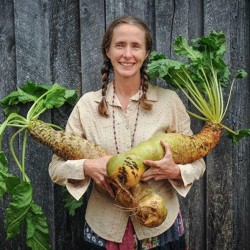
Giant Yellow Eckendorf Beet...
Prijs
€ 1,85
(SKU: VE 63 E (3g))
Seeds Gallery EU,
5/
5
<h2><strong>Giant Yellow Eckendorf Beet Seeds</strong></h2>
<h2><span style="color: #ff0000;" class=""><strong>Price for Package of 100 (3g) seeds.</strong></span></h2>
<p>The 1927 Henry Fields catalog said, “Giant, smooth, long roots of cylindrical shape, weighing up to 9 kg (20 pounds) each and growing two-thirds above ground. Solid white flesh with high food value.” These big yellow-skinned roots are perfect for growing as animal food, a tradition that is finally being brought back on many small farms.</p>
<p>High nutrition and vitamin content, tops are rich sources of vitamin C, eat-in salads or soups. A native of northern Africa and the western Mediterranean, ancient Greeks have used leaves only. Beetroot can be steamed with other vegies or grated raw as well as boiled and pickled for salads. Best results in soil with PH over 6 and if always kept moist. Can sow indoors and transplant. Thin to 30-50mm, young thinnings may be transplanted older thinnings as a leaf vegetable, sow after frost. Roots store well after harvest. Sow spring to autumn, anytime in mild climates. 50-90 seeds per gram</p>
<p><strong>Uses</strong></p>
<p>Contemporary use is primarily for cattle, pig and other stock feed, although it can be eaten – especially when young – by humans. Considered a crop for cool-temperate climates, the mangelwurzel sown in autumn can be grown as a winter crop in warm-temperate to sub-tropical climates. Both leaves and roots may be eaten. Leaves can be lightly steamed for salads or lightly boiled as a vegetable if treated like English spinach. Grown in well-dug, well-composted soil and watered regularly, the roots become tender, juicy and flavourful. The roots are prepared boiled like potato for serving mashed, diced or in sweet curries. Animals are known to thrive upon this plant; both its leaves and roots provide a nutritious food. George Henderson, a 20th-century English farmer and author on agriculture, stated that mangel beets were one of the best fodders for dairying, as milk production is maximized.</p>
<p>The mangelwurzel has a history in England of being used for sport,[5] for celebration, for animal fodder and for the brewing of a potent alcoholic beverage. The 1830 Scottish cookbook The Practice of Cookery includes a recipe for a beer made with mangelwurzel.[6] In 19th-century American usage, mangel beets were sometimes referred to as 'mango.'</p>
<p>During the Irish Famine (1845–1852), Poor Law Guardians in Galway City leased (on a 999-year-lease) a twenty-acre former nunnery to house one thousand orphaned or deserted boys ages from five to approximately fifteen. Here the boys were taught tailoring, shoe making, and agricultural skills. On a five-acre plot, they grew potatoes, cabbage, parsnips, carrots, onions, Swedish turnips, and "mangold wurtzel"--both for workhouse consumption as well as for a cash crop. See Lord Sydney Godolphin Osbourne's "Gleanings in the West of Ireland" published in London 1850, T & W Boone, page 58.</p>
<p>As with most foods, subsisting on solely one crop can produce dietary deficiency. The food shortages in Europe after World War I caused great hardships, including cases of mangel-wurzel disease, as relief workers called it. It was a consequence of eating only beets.</p>
<p><strong>Growing requirements</strong></p>
<p>In general, mangelwurzel are easy to grow. They may require supplementary potassium for optimum yields, flavour and texture, and foliage readily displays potassium deficiency as interveinal chlorosis. This can be corrected with either organic or nonorganic sources of potash.</p>
<p><strong>In tradition</strong></p>
<p>In South Somerset, on the last Thursday of October every year, Punkie Night is celebrated. Children carry around lanterns called "Punkies", which are hollowed-out mangelwurzels. Mangelwurzels are also carved out for Halloween in Norfolk and Wales. Also N.W. Cumberland (Workington), in the 1940s and 50s -- for "Jack o'Lantern" night.</p>
<p>John Le Marchant recommends cutting the "mangel-wurzel" to learn the proper mechanics for a draw cut with the broadsword in his historic manual on swordsmanship.</p>
<p><strong>In popular culture</strong></p>
<p>It is the source of the name for the English folk/pop/comedy/scrumpy-and-western musical group The Wurzels.</p>
<p>English comedian Tony Hancock made a short song about mangelwurzels in the Hancock's Half Hour episode "The Bowmans".</p>
<p>The mangelwurzel is featured in the 1984 novel Jitterbug Perfume written by Tom Robbins. The main character Alobar originally hails from a Slavic nation where beets are quite prevalent, and eventually the mangelwurzel is used as the base note in the mysterious perfume from which the book derives its name.</p>
<p>The mangelwurzel also had a role in the cult TV kids show as Worzel Gummidge's head, where it could often be heard to say things like "go boil your head."</p>
<p>Mangels are a frequently mentioned animal fodder in George Orwell's novel, Animal Farm.</p>
<p>Mangel wurzel is the only vegetable that was available for Sarah Bruckman to purchase in Two Fronts by Harry Turtledove. Turtledove also uses it as a staple of the post-eruption Maine diet in his Supervolcano series.</p>
VE 63 E (3g)

- Aanbieding!

Variëteit uit Hongarije
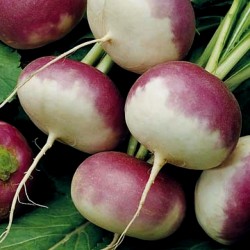
Hungarian Sugar beet seeds...
Prijs
€ 2,25
(SKU: VE 163 (1g))
Seeds Gallery EU,
5/
5
<h2><strong>Hungarian Sugar beet seeds Horpácsi</strong></h2>
<h2><span style="color: #ff0000;" class=""><strong>Price for Package of 500 (1g) seeds.</strong></span></h2>
<p>Due to the sufficiently sweet radish taste in the rainy landscapes of Hungary, it is grown not only for fodder but also for food. It is pickled like sauerkraut. It is frost tolerant and can be harvested in late autumn. Its root is flat, round, the apical part is purple in color, protruding slightly from the ground. Sugar beet seeds Horpácsi is not sensitive to frost, it still grows during the autumn, you can pick it up in late autumn.</p>
<p>Sowing depth: 2-3 cm.<br>Optimal germination temperature: 10-15 ° C.</p><script src="//cdn.public.n1ed.com/G3OMDFLT/widgets.js"></script>
VE 163 (1g)


Plant bestand tegen kou en vorst

Variëteit uit Hongarije

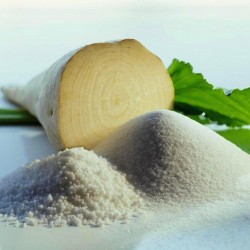
Sugar beet seeds Authority...
Prijs
€ 1,75
(SKU: P 8)
Seeds Gallery EU,
5/
5
<meta http-equiv="Content-Type" content="text/html; charset=UTF-8" />
<h2><strong>Sugar beet seeds Authority - Heirloom</strong></h2>
<h2><span style="color: #ff0000;"><strong>Price for Package of 20 seeds.</strong></span></h2>
<p>Sugar beet - a cold-resistant, light-loving culture, medium-demanding to the fertility of the soil. Sugar beet gives high stable yields, easy to transport. Sugar beet loves heat, light, and moisture.</p>
<p>The amount of sugar in the fruit depends on the number of sunny days in August — October. Sugar beet is used not only for making sugar but also for feeding animals.</p>
<p>The optimum temperature for seed germination is 10–12 ° C, growth, and development is 20–22 ° C. Shoots are sensitive to frost.</p>
<p>Name: Sugar beet Authority<br />Harvest: 75-100 days<br />Root weight: 500-850 g<br />The sugar content: 18-21%<br />Sowing depth: 2-3 cm.</p>
<p>tion temperature: 10-15 ° C.</p>
P 8 (20 S)


Variëteit uit Slovenië
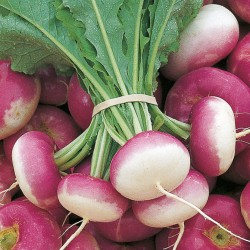
Bietenzaden Kranjska rond
Prijs
€ 1,45
(SKU: VE 105)
Seeds Gallery EU,
5/
5
<!DOCTYPE html>
<html>
<head>
<meta http-equiv="Content-Type" content="text/html; charset=UTF-8" />
</head>
<body>
<h2><strong>Bietenzaden Kranjska rond</strong></h2>
<h2><span style="color: #ff0000;"><strong>Prijs voor een verpakking van 300-400 (1 g) zaden.</strong></span></h2>
<p>Kranjska Beet is een vroege variëteit die zonder vertraging gebruikt kan worden, en het is goed voor beitsen en verse consumptie. Het heeft een platte ronde vorm met een roodpaarse kop. Als er voldoende vocht is, gedijt het in elke grond. Het groeit goed in de buurt van sla, spinazie en bonen.</p>
<p>Een verdikte ronde of cilindrische wortel wordt als voedsel gebruikt. Aan de top is een rozet met ovale langwerpige bladeren die lichtgroen van kleur en behaard zijn. Er zijn geclusterde bloeiwijzen op de stengel. In 1 g kunnen 300 - 400 zaden zitten.</p>
<p>Rode biet wordt geteeld na granen, industriële erwten of vroege voedergewassen. Het wordt gebruikt in combinatie met menselijke consumptie en een deel als voer. Het gedijt op elke voldoende vochtige grond.</p>
<p>Het tolereert geen stagnatie (waterretentie). Het is het meest winstgevend om het te laten groeien met irrigatie.</p>
<p>Rode biet mag gedurende minimaal 3-4 jaar niet op dezelfde plaats worden gezaaid, en op dat moment mogen er geen andere kool op die plaats zijn.</p>
<p>Zaaien / planten van rapen</p>
<p>Kiembietzaden ontkiemen ongeveer 15 dagen. De minimale kiemtemperatuur is 5 ºC en de optimale 20 ºC. Het is bestand tegen milde vorst tot -4 ºC als het niet lang duurt.</p>
<p>Het wordt meestal gekweekt door direct te zaaien, maar het is ook mogelijk om uit zaailingen te groeien. Het wordt gezaaid met een precisiezaaimachine. In Europese landen worden vroege cultivars gekweekt door van maart tot mei te zaaien met een rijafstand van 20-30 cm en een rijafstand van ongeveer 10 cm, waarvoor 1,5-2,5 kg / ha zaden nodig zijn. In 80-60 dagen bereikt de verdikte wortel een diameter van 6-10 cm als hij klaar is voor de oogst.</p>
<p>Als het de bedoeling is om 15 - 20 planten / m2 te zaaien, wordt gezaaid op een rijafstand van 40 cm en een rijafstand van 5 - 10 cm. Afhankelijk van de voorcultuur kan van eind juni tot half juli worden gezaaid.</p>
<p>Oogsten en opslag van rapen<br />Zijbieten worden geoogst in de tweede helft van oktober of begin november voor strenge vorst. Met geschikte graafmachines wordt hij eruit gehaald, de bladeren worden afgesneden en op maat gesorteerd. Opbrengsten zijn meestal afhankelijk van de bereikte samenstelling en de hoeveelheid en verdeling van neerslag en kunnen 20 - 60 t / ha bedragen.</p>
<p>C.</p>
</body>
</html>
VE 105 (100 S)

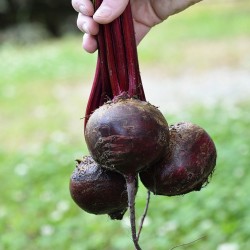
Detroit Rode Bieten Zaden
Prijs
€ 1,35
(SKU: VE 204 (2g))
Seeds Gallery EU,
5/
5
<h2><strong>Detroit Rode Bieten Zaden</strong></h2>
<h2><span style="color: #f80000;" class=""><strong>Prijs voor Pakket van 120 (2g) zaden.</strong></span></h2>
Rode biet - Detroit is een zeer oude bietsoort die zich nog steeds buitengewoon goed gedraagt. Zeer populaire variëteit voor de teelt. De donkerrode bolvormige wortels worden tot 7 cm groot en smaken erg goed. Groene toppen met tinten van donkerrood.<br><br>Deze medicinale plant staat al zo'n 2000 jaar bekend als medicijn. Rode biet is een natuurlijke anti-anemische, antibacteriële, kankerbestrijdende, koortswerende, antioxidant, antisclerotische, ontgiftende, diureticum, remineraliserende.<br><br>Bietensap regenereert de lever en gaat veroudering tegen. Zelfs in de vroege geneeskunde zijn bieten een remedie tegen bloed, meer bepaald de behandeling van bloedarmoede, hoewel het een genezend effect heeft op een aantal andere ziekten.<br><br>Bieten reguleren met succes de bloeddruk. Bietensap is een nuttig antipyreticum, omdat het een hoge lichaamstemperatuur verlaagt. Rode bietenzaden worden gebruikt voor de therapeutische behandeling van genitale en darmtumoren.<br><br>Zaaien:<br>Direct zaaien vanaf 1,5 cm diep van half april tot juni.<script src="//cdn.public.n1ed.com/G3OMDFLT/widgets.js"></script>
VE 204 (2g)


Variëteit uit Spanje

Plant bestand tegen kou en vorst
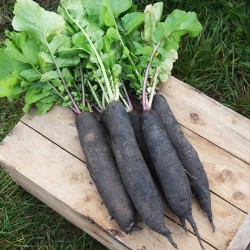
Zwarte bergbietenzaden
Prijs
€ 1,25
(SKU: P 4)
Seeds Gallery EU,
5/
5
<h2 class=""><strong>Zwarte bergbietenzaden</strong></h2>
<h2 class=""><span style="color: #ff0000;"><strong>Prijs voor Pakket van 20 zaden.</strong></span></h2>
<p>Variëteit met donkerbruine of zwarte schil en wit vlees, lang en dun, ongeveer 20cm. zeer aangepast aan koude en droge klimaten.<br /><br />De zwarte bergraap is een wortel, een knol met zwarte schil en witachtig vruchtvlees met een aangename en licht kruidige smaak. Het wordt in de winter geoogst en tot maart geconsumeerd. Het is fijner en lekkerder dan de rest van de raapsoorten.<br /><br />Het wordt gebruikt voor crèmes of soepen, maar ook voor garnering en rauw in salades, of gebakken als aardappelen.<br /><br />Herkomst: Les Refardes - Spanje</p>
<script src="//cdn.public.n1ed.com/G3OMDFLT/widgets.js"></script>
P 4 (20 S)










